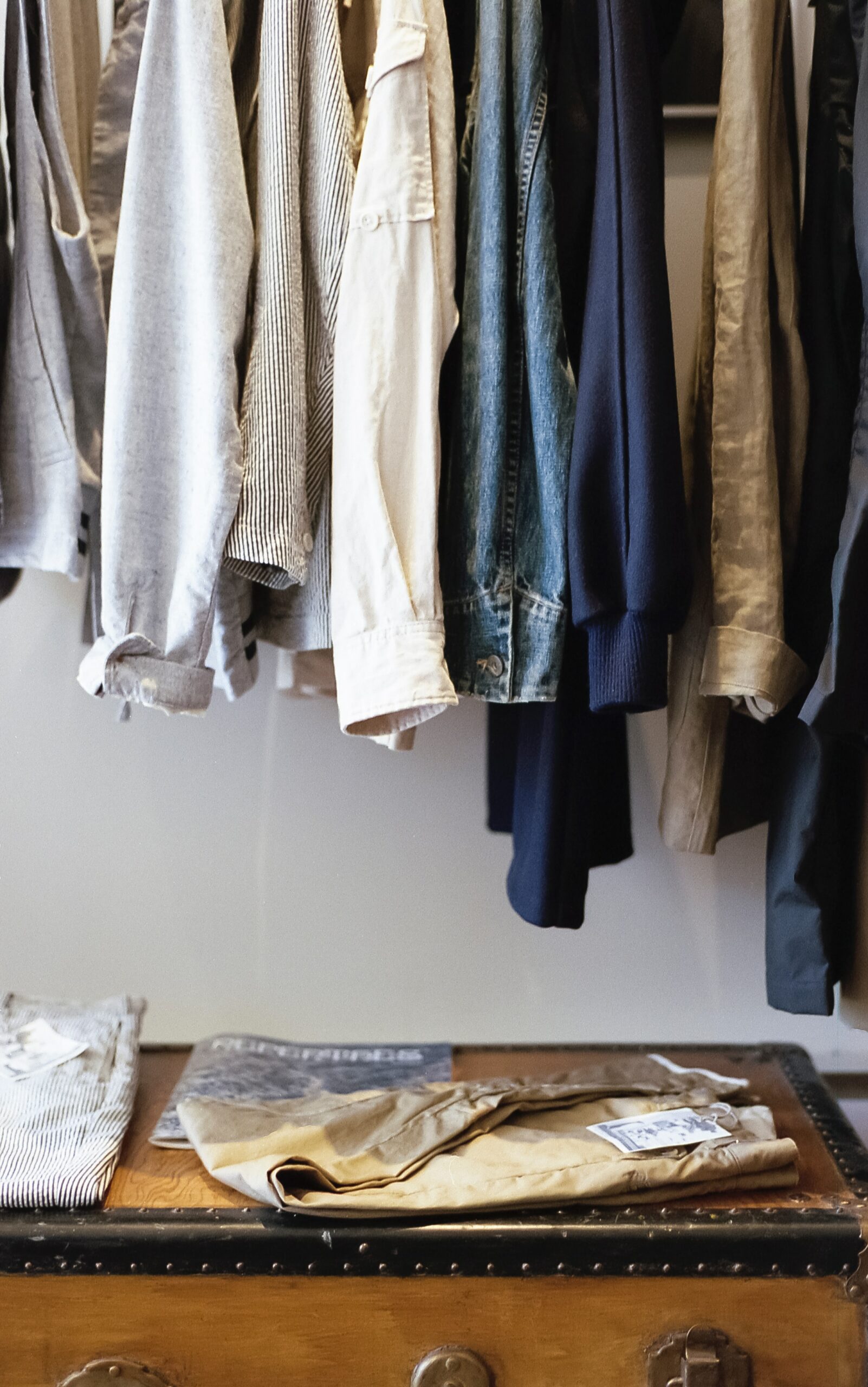From Fast To Last: Unveiling 8 Shocking Environmental Impacts Of Fast Fashion And What You Can Do To Help
Every day, a new fashion collection launches, and shoppers go crazy over the new trendy designs. But what impact does it have on our environment? Read all about the environmental impacts of fast fashion here.

Zara, Shein, H&M, Gap, Primark, and Victoria’s Secret.
Do you know what is that one thing these fashion giants have in common?
Yes, it could be their trendy collection, affordable price tags, or wild popularity among the masses. But the thing we are actually looking for is something far more important than style, cost, and fame. It is their new collection that comes out every 2 months, and the grave danger it poses to our environment.
Do you know? A truck full of discarded clothing is dumped in the landfills or set ablaze EVERY SECOND! And with fast fashion, you can expect this rate to go even higher in the next few years.
In this blog post, we address a most serious concern — The environmental effects of fast fashion. We are sharing some astonishing facts to strengthen our claims. But don’t worry; we won’t leave without an actionable plan you could follow to curb the damages.
So if you are an environmental enthusiast, a responsible human being, or just care about the legacy you leave for your children, sit back and hold tight.
Because this is going to be an eye-opening ride!
First Things First, What Is Fast Fashion?
Imagine being at an amusement park whose main attraction is a roller coaster. You rode on it once and loved every bit of it, and now your heart wants the same adrenaline and exhilaration again and again!
Fast fashion is a similar case. Brands launch collection after collection, and you impulsively buy new clothes to get that adrenaline rush. Soon, it turns into a super race. Which brand can give out most new collections and sell out in a flash?
Well, here’s the not-so-fun part of this race.
In an attempt to win with quantity, manufacturers almost always neglect quality. They use cheap materials and use subpar production methods. The result: disposable apparel that won’t stand even 5 washes and end up in landfills in months.
But hey, don’t worry! There’s a way to turn that roller coaster around and save the planet we call home. Stay tuned because we are sharing loads of insight soon.

Fast Fashion, At What Cost? 8 Truth Bombs To Shake Your Soul
The world is now using an estimated 80 billion clothing items each year. The figures are expected to increase by 50% by 2030 if the current trend of consumption and production continues.
But what effect does this fashion frenzy have on us, our planet, and future generations? Get ready to feel surprised as we unveil 8 thought-provoking facts about the impact of fast fashion on our environment.
💣Truth Bomb 1: Your White Shirt’s Carbon Footprint Could Outrace A 35-Mile Drive!
A seemingly innocent white t-shirt is a staple in every wardrobe. But its carbon impact goes further than our imagination. According to this study, the entire production and distribution line of a single white t-shirt emits the same amount of substances as your car would produce if you drove it for 35 miles.
The same is true for every piece of apparel, especially the ones that use non-sustainable materials. For instance, cotton requires harmful pesticides in its agriculture. Then, the production processes involve fuel combustion and chemical treatment giving off greenhouse gases and other toxic chemicals in the atmosphere.
Next, transport and logistics are also carbon-intensive procedures, contributing to increased air pollution.
💣Truth Bomb 2: Producing 1 Pair Of Socks = Dumping 1,200 Bottles Of Water
Fast fashion is the biggest water consumer among all factories and industries. It uses a whopping one-tenth of all the industrial water. This water is used in manufacturing processes and cleaning procedures.
To put it into perspective, producing just one pair of socks will consume 1,200 bottles of 500ml water. Similarly, a T-shirt uses 5,400 bottles, and a pair of jeans 20,000. In a world where every 1 in 10 people lack access to clean water, these figures are alarmingly high.
💣Truth Bomb 3: Synthetic Textiles Are The Root Cause Of Polluting Our Oceans With Plastic
Manufacturers mix synthetic microplastics in natural fabrics such as cotton to lower the price tag. These materials, like polyester, are cheaper to produce, affordable for all, and highly versatile.
But here is the plot twist: plastic-based fabrics are the primary reason our oceans fill up with toxic materials daily. The plastics end up in the waterways as byproducts and through our washing machines.
Furthermore, these synthetic textiles emit far more carbon than conventional cotton and are non-biodegradable.
💣Truth Bomb 4: Polyester Production Devours Millions Of Oil Barrels Annually
First, polyester is a petroleum product. It means the raw materials for its production come from oil. Next, since the manufacturing process is a highly energy-intensive procedure. So the entire production of synthetic materials, like polyester, requires almost 342 million barrels of oil yearly.
And because petroleum is a non-renewable resource, we are not getting any of it back. Cue the high fuel prices!
💣Truth Bomb 5: Materials Like Viscose Utilise Countless Toxic Chemicals
Viscose or rayon is the world’s third most popular fabric. The material is widely used in several apparel and is often greenwashed by brands because it is plant-based.
But your viscose scarf contains more chemicals than you can imagine. Sulfuric acid and caustic soda are just two of its harmful components, both hazardous enough to cause skin, lungs, heart, and mental disorders.
RELATED: Click here to learn more about rayon and its sustainability.

💣Truth Bomb 6: Cellulose Fabric Responsible For Cutting Down 150 Million Trees
Cellulose and other plant-based textiles require cutting down trees to get their byproducts. According to CanopyPlanet, more than 150 million trees are cut down yearly to manufacture cellulose fabric.
Deforestation is one of the leading contributors to global climate change.
💣Truth Bomb 7: Less Than 1% of Clothing Material Is Recycled
With the fashion industry producing more than 1 million pieces of clothing daily, the amount recycled is embarrassingly low. Also, remember that whatever is not recycled or reused ends up in landfills. And once these landfills pile up, these garments are incarcerated, polluting our atmosphere even more.
💣Truth Bomb 8: Fashion Industry Is The Most Labour-Dependent Industry
Fast fashion is not only detrimental to the environment, but it also dramatically impacts its labourers. The chemicals used to treat fibres while turning them into textiles are corrosive and can lead to several health complications.
Multiple countries have banned the chemical-intensive production of fabrics like viscose, so manufacturing facilities have largely moved to developing countries in Asia and South America. These countries have poor labour rights, unsafe working conditions, and unfair wages.
Slavery, child labour, and depriving girls of their education are common problems in the textile industries.
It’s Time For A Fashion Revolution: How to Minimize Fast Fashion’s Environmental Impact and Embrace Sustainable Style
Do you know? One-third of the fashion industry consumers would choose a sustainable brand over a fast-fashion one if they had a choice. Phew! That is a pretty encouraging statistic after all those scary ones, right?
But really, what part can we as shoppers play in curbing the devastating effects of the fashion frenzy? Here are a few pointers to help you get started:
1. Choose Quality Over Quantity
Invest in well-made, durable garments that withstand the test of time. Focus on timeless designs rather than chasing fleeting trends. Quality items last longer, reducing the need for frequent replacements.
If we could extend the average life span of clothes by 9 months, we could save £5 billion worth of materials, energy, and cost to produce, supply, launder, and dispose of these clothes. Imagine!

2. Practice Mindful Consumption
Before purchasing, ask yourself if you genuinely need the item or if it aligns with your style. Avoid impulse buys and opt for versatile pieces that can be mixed and matched, extending their lifespan in your wardrobe.
Click here to read more about how to put together a capsule wardrobe that is minimal, sustainable, and a lifesaver for anyone with a busy daily routine.
3. Take Care of Your Clothes
Extend the life of your garments by following proper care instructions. Wash items only when necessary, use cold water, and air dry when possible. Repair and mend clothing instead of discarding them at the first sign of wear and tear.
Studies have shown that if we could extend the number of times we wear each garment, we could reduce greenhouse gas emissions by a whopping 44%.
Subscribe to our newsletter and save!
Join the SIS community and get 10% off your next purchase.
4. Embrace Second-hand and Thrift Shopping:
Explore the treasure troves of pre-loved fashion by shopping at thrift stores, consignment shops, or online platforms. Give unique pieces a second life while reducing demand for new clothing production.
Are you looking for some tips and tricks for second-hand shopping? We have them all here.
5. Opt for Sustainable and Ethical Brands
Support brands like the Swiss Impact Store that prioritise sustainability, fair labour practices, and use eco-friendly materials. Look for certifications like Fair Trade, GOTS (Global Organic Textile Standard), or B Corp to ensure their commitment to ethical and sustainable practices.
6. Educate Yourself and Spread Awareness
Stay informed about the environmental and social impacts of fast fashion. Share your knowledge with others, engaging in conversations and encouraging them to make conscious fashion choices.
Remember, every small action matters. By adopting these practices, we can collectively drive change and positively impact the fashion industry. Together, we can pave the way for a more sustainable and ethical fashion future.

The Final Stitch
Hey there, fashion superheroes! We’ve reached the grand finale of our eco-fashion adventure, but the story doesn’t end here. Imagine this: you hold the magical threads of change in your hands. By making small choices, we can stitch together a more sustainable future.
So, my stylish comrades, let’s recap our journey. We’ve learned that fast fashion can harm our planet like a mischievous gremlin wreaking havoc.
But fear not!
We have the power to make a difference. It’s time to embrace quality over quantity and support brands that care about people and the Earth.
Wait, there’s more!
I have an exciting secret to share. If you want to level up your sustainable style game, visit the Swiss Impact Store. It’s like a hidden treasure trove of fashion that’s kind to the planet. You’ll find a collection that speaks volumes about your love for style and the Earth.

So, will you join our fashion revolution? Will you be the hero who chooses fashion with a purpose? Step into the world of sustainable style, and let’s create a future where fashion and the planet coexist in perfect harmony. Together, we can make it an epic adventure.
Are you ready?
Let’s go!

Making Sustainable Lifestyle Transformation Easy
SiS is more than a simple e-commerce platform. Our mission is to encourage, help, and inspire people to look for sustainable sourcing, reduce production waste, carbon footprint, and make conscious choices.
Whether you’re on the hunt for sustainable clothing, clean beauty, or ethical homeware, our team has done the hard work for you, carefully screening brands before ever being displayed at SIS.
So all that’s left for you is to shop with peace of mind.